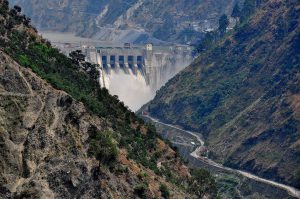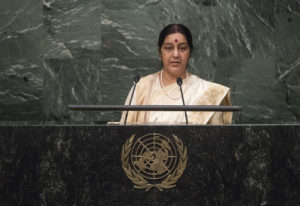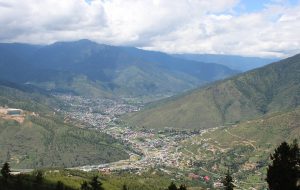Political relations between China and Latin America took on a new significance in 2015 with the state visit of Chinese premier Li Keqiang to Brazil, Colombia, Peru and Chile, and the inaugural China-CELAC ministerial forum in Beijing. But the social and environmental impacts of this increasingly active partnership also made headlines around the world. Here, experts tell Diálogo Chino what to expect in 2016 and beyond.
Paulina Garzón, director of the China-Latin America sustainable investment initiative at American University
Venezuela, Brazil, Ecuador and Argentina are four of Latin America’s top 5 oil exporters and are the region’s biggest beneficiaries of Chinese development loans. These countries have been particularly badly affected by the drop in oil prices and face serious difficulties in repaying their debts to China. Venezuela, for example, has on more than one occasion been close to defaulting to China, so much so that public discontent towards the debt – which is high interest, short term, backed by oil and tied to the contracting of Chinese workers and companies with no space for popular participation and consultation – is growing, as it is in other countries.
Chinese finance has been key to the region’s promotion of a primary export-oriented model with catastrophic consequences for the environment and local communities. If China and the countries of Latin America comply with the newly-signed Paris climate agreement, this correlation should change in 2016, a critical year for China’s learning curve in Latin America in which it should consider the roles of government, the law and civil society. In order to achieve a “strategic integral alliance”, China should go beyond the exclusive relationship with governments, comply with national legal frameworks and promote spaces for dialogue with all interested parties.
The main challenges in 2016 will relate to the management of the China’s loanees; the “democratisation” of economic cooperation; the improvement of risk analysis instruments to ensure responsible lending; and the possibility of reorienting finance towards sustainable projects which have concrete benefits for local populations.
Jin Jiaman, executive director of the Global Environment Institute
Chinese NGOs have had next to no involvement in the political and economic exchanges in Latin America so far. It’s far away and Chinese NGOs don’t have the funding required to work across those distances. But we are aware of issues arising from overseas investment in Latin America when Chinese firms start operations there, particularly in the resources sector, such as mining.
At the Paris climate change talks China announced the South-South Cooperation Fund, which may be formally established this year. Once that happens China is very likely to run capacity building projects in other countries, meaning opportunities for cooperation, and we’re working to promote that. Hopefully climate change projects, particularly aid projects, can be carried out in Latin America.
But for Chinese NGOs there are plenty of opportunities to get involved. There are only a limited number of officials working on south-south cooperation, nowhere near enough to account for the 140 million yuan of annual funding. Over the last two years the GEI has run some solar power demonstration projects in Myanmar – solar powered lighting and wells, improving the adaptability of local communities and Xie Zhenhua (China’s special representative on climate change) has praised our work and so the National Development and Reform Commission may permit more NGO involvement.
At home, Chinese NGOs are making themselves heard on the environment, climate change and education. Now we need to take advocacy and turn it into real action on the ground. With financial support from government, China’s NGOs will very quickly start working overseas.
We’d suggest work starts in Peru. COP20 was held there last year and Chinese and Latin American NGOs were able to sit down and talk face-to-face. These kind of links are just getting started, but there’s a little bit more of a foundation in Peru. Chinese NGOs are very keen to build links with their Latin American counterparts.
Margaret Myers, director of the China and Latin America programme at the Inter-American Dialogue
Latin America can expect both continuity and divergence from Chinese actors in the coming years. The region has been a critical source of raw materials and an important destination for Chinese exports for almost two decades. It will continue to be so by all accounts. But in many cases, Chinese companies are changing their approach to economic engagement in the region. They are pursuing strategic, in-country partnerships and greater integration across regional value chains.
Chinese firms are also increasingly cognisant of local standards and regulations, viewing adherence as good for business. If they come to pass, China’s newest investment policies – as defined in the “1+3+6 cooperation framework” and “3×3 model” – and infrastructure plans could be a major boon for Latin America, rather than confining it to the lower rungs of Pacific value chains. But much depends on China’s future progress toward economic reform, among other factors.
Enhanced overseas investment is supportive of China’s reform efforts, but will require at least moderate rates of economic growth. China’s “economic transformation” will also have varied effects on Latin American’s raw materials and consumer goods exporters. Demand is still high for many of the region’s commodities, but will drop along with China’s rate of domestic investment. As in previous years, the challenge for Latin America in 2016 will be to improve trade conditions and attract much-needed Chinese investment, while ensuring that engagement is promoting of sustainable economic growth.
Álvaro Méndez, senior research fellow at the London School of Economics and senior lecturer in international relations at Regent’s University London
Latin America has enjoyed a long period of rapid growth in recent years, underpinned by sustained growth in China and buoyant world commodities prices. But China has slowed significantly since 2012 against a backdrop of weak economic conditions in the US, EU and Japan – China’s consumer markets – which has created the backlog of key commodities that has sent prices tumbling. Export revenues have declined and the terms of trade deteriorated for Latin America’s commodity-exporting nations.
China’s impact is not homogeneous across the region but the main lesson for the region is still a simple one – commodity-dependent growth does not work. Latin Americans need a more pragmatic long-term vision for their future: their prospects are not as rosy as previously assumed, nor are their interests served by the China-driven return to commodity-export dependency, a fact that the current depression in commodity prices proves beyond all doubt.
The lesson for China is that replicating the pattern of their commercial relations with Africa in Latin America and elsewhere risks damaging its Third World appeal. China had better address the ‘original sin’ of its South-South relations – the ethnocentrism by which local building works in Africa were reserved to Chinese labourers, and even retail sales of Chinese goods to Africans were monopolised by migrant Chinese traders. Africans were shut out of their own ‘development’, which is hardly a model of South-South cooperation. Yet the Chinese are doing nothing different in Latin America despite Premier Wen’s 2012 promise to the President of Uruguay, ‘We will not treat you like Africa’. The collapse of the Chinese stock market calls into question even the apparently self-serving commitments of China at CELAC and the promises of Li Keqiang on his visit to the region in 2015.
Present trends continuing, the prospects look grim: deindustrialisation, economic deceleration, mass unemployment, declining real income, stagflation, unless the region insists with one voice on being treated fundamentally differently to Africa. But Latin America’s main political problem is that its elites are the last to feel the pain—a lag between elites and masses that is reflected in foreign policy. Perfectly content to profiteer, the elites perceive little conflict with the Chinese development model, whereas the masses feel the exploitativeness of it ‘up close and personal’. This is already causing social unrest that the elites will not be able to ignore in the long run, even if the Chinese economy bounces back.
Diálogo Chino looks back at the year 2015 for China, Latin America and the environment. To view full screen click here






